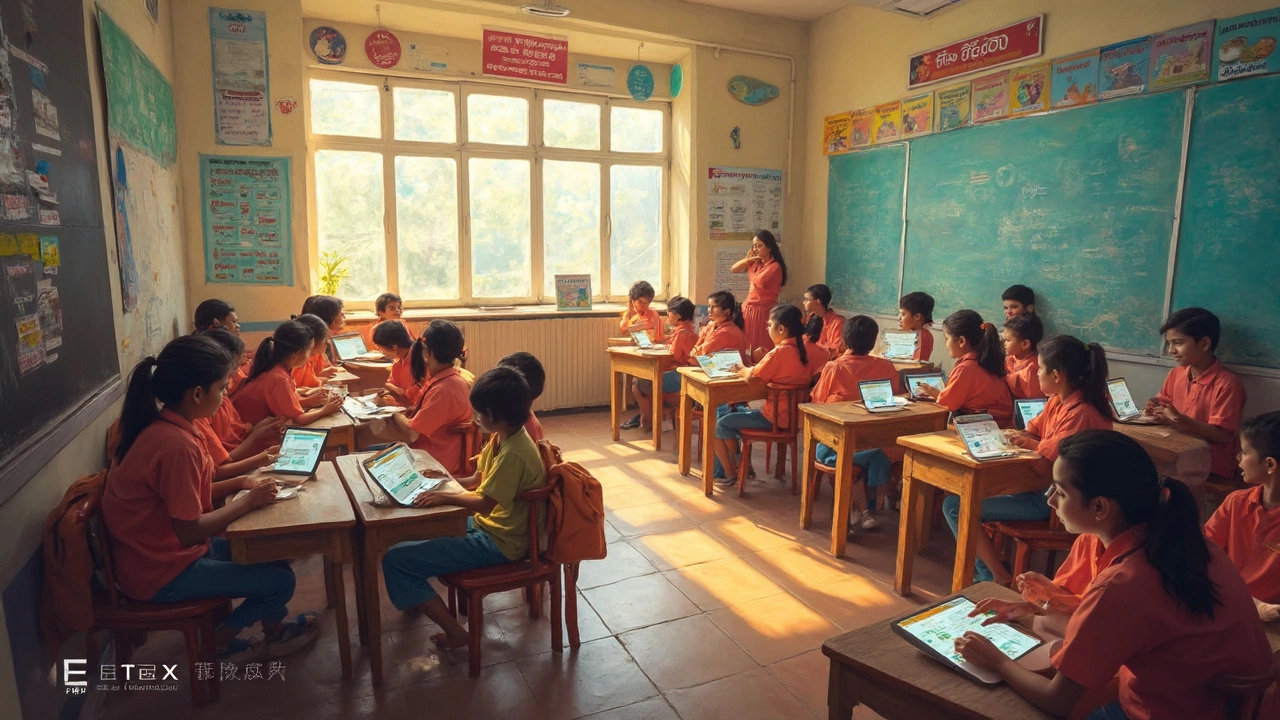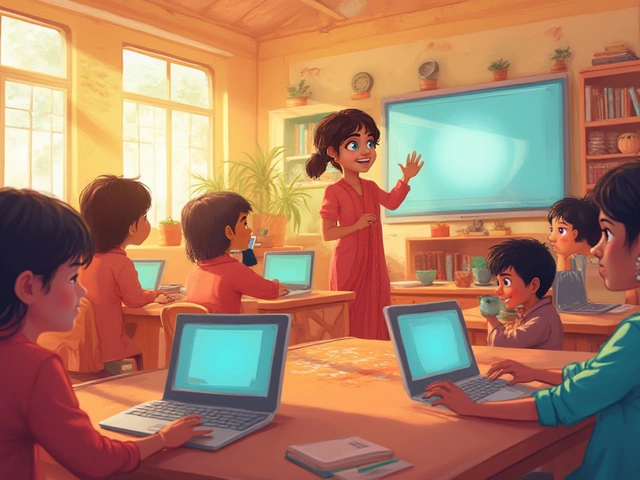eLearning might seem like a fancy trend, but it's here to stay. More than ever, people worldwide are jumping into online learning, whether it's for school, work, or just personal growth. But what's the secret sauce that makes eLearning platforms effective?
First, let's chat about tech. We're talking reliable internet, user-friendly platforms, and nifty tools that make online education not just possible but enjoyable. If the tech fails, the whole experience crashes. So, investing in robust digital infrastructure is key.
Next up, there's this thing called content. You know, what you're actually learning. It can't be dry and boring. Good content is engaging, well-structured, and relatable. It sticks with you, gets you thinking, and makes you want to learn more.
- Power of Technology
- Content is King
- Interactive Learning
- Support and Guidance
- Adaptability and Accessibility
Power of Technology
Alright, let’s talk tech. When it comes to eLearning platforms, technology is the backbone holding everything together. Imagine trying to watch a live class with endless buffering – not exactly ideal, right? That's why having a solid technological foundation is crucial.
The first piece of the puzzle is reliable internet. Without a strong connection, students can face disruptions, missed sessions, and ultimately, frustration. It’s like trying to join a virtual classroom but constantly being stuck at the door. So, before anything else, the internet connection needs to be stable and fast.
Next, we dive into the online education platforms themselves. These platforms must be intuitive and user-friendly. No one wants to waste precious learning time figuring out how to navigate a confusing interface. When platforms are designed with users in mind, accessing courses becomes seamless, letting learners focus on what truly matters: the content.
Let’s not forget about the tools these platforms offer. Think interactive quizzes, video lectures, discussion boards, and more. These tools aren’t just bells and whistles; they enhance the learning experience by making it engaging and interactive. In turn, this keeps learners motivated and hungry for more knowledge.
Consider this: There are currently over 4.6 billion Internet users globally, and a growing chunk relies on digital platforms for learning. With numbers like that, the need for robust tech in virtual classrooms isn't just optional – it's essential.
Lastly, security is a biggie. With so much data being shared online, protecting personal information is crucial. Cutting-edge security protocols are necessary to keep everything safe from prying eyes. And to ensure everyone has access, cross-device compatibility should be a priority. Learners should be able to switch between devices without a hitch.
In a nutshell, whether it's a smooth interface, engaging tools, or rock-solid security, technology plays a massive role in how effective digital learning can be. Without it, eLearning would be flat, uninterested, and honestly, pretty challenging.
Content is King
Alright, let's talk about why content is a big deal in eLearning platforms. Imagine sitting through a dull lecture where you barely remember anything afterward. That’s the nightmare no one wants! The heart of eLearning is its content; it's the bridge between learners and knowledge.
For starters, content should never be just flat facts. It's got to be engaging, with a mix of text, videos, quizzes, and maybe even games. Imagine learning about history through a thrilling documentary or understanding math with interactive problems you can explore. That's how content becomes memorable.
What's also crucial is content relevance. It's got to match learners’ needs and be updated regularly. Outdated content can lead to misconceptions and boredom. Including current examples and case studies makes it relatable and real. And don't forget diversity in content—catering to different learning styles, whether visual, auditory, or kinesthetic, is a must.
Let's not overlook the structure. Chunking information into bite-sized pieces helps. This prevents information overload and keeps learners from zoning out. Clear, concise, and organized content ensures that learners know what's coming next and can follow along easily.
For added effectiveness, learner feedback plays a vital role. Getting insights from students about what works and what doesn’t can significantly refine content quality. Many online education platforms use analytics to see which parts of their courses engage students the most.
| Content Type | Engagement Level |
|---|---|
| Video | High |
| Text | Moderate |
| Quizzes | High |
| Infographics | Moderate |
So, with the right mix of engaging, relevant, and well-structured content, eLearning can truly come alive and make a lasting impact.

Interactive Learning
Interactivity is the heart of eLearning. Just imagine sitting through a two-hour online course that's nothing but slides—yawn, right? The idea is to make learning a two-way street instead of a bland monologue. So, how do we jazz up online courses to hold our attention?
First, let's bring in virtual classrooms where learners can actively participate. Think of exercises where you can click, drag, and drop—anything that makes you a part of the process rather than a passive viewer. It's like YouTube tutorials where trying stuff on your own beats just watching it.
Using quizzes and prompts can also help in boosting engagement. Here’s a fun fact: interactive video content can improve learning outcomes by up to 60%. Doesn't that sound awesome? It's because when learners interact with the content, they tend to remember more.
"Interactive learning leads to deeper understanding because it involves students' emotions and experiences. It transforms them from passive recipients to active participants." - Dr. Jean Piaget
And don't forget gamification! Earning badges or advancing in levels can make learning feel more like a game rather than a school task. Really, who doesn’t love a bit of gaming now and then?
Finally, live sessions give a human touch. Through live discussions and Q&A, learners feel more connected and motivated. It’s like how virtual meetups keep us going during the longest work-from-home weeks!
Support and Guidance
Alright, so you've got your tech and content on point for your eLearning platforms. But what happens when a user stumbles into a tricky spot? That's when having solid support and guidance comes in. Nobody likes feeling lost, especially when learning online without a teacher physically present.
Think about the time when you got stuck in a course and needed help fast. Having a responsive support system can make all the difference. Whether it's a live chat, email, or even a vibrant online community, immediate support is key. It's like having that go-to buddy who’s got the answers.
Some platforms even offer 24/7 support, making sure there's always someone to turn to. And let's not forget dedicated mentors or instructors—these folks can guide learners not just technically but also offer personalized learning tips. They're like the personal trainers of the e-learning world.
Here's a quick look at what effective support might include:
- Live Support: Real-time assistance for quick troubleshooting.
- FAQs and Tutorials: Easy-to-access resources for common questions and proactive learning.
- Instructor Access: Direct contact for personalized help and advice.
- Community Forums: A place where learners can share tips and experiences.
So, if you're setting up or choosing an online education platform, make sure there's more than just a course catalog. Check for a support system that creates an environment rich with opportunities for guidance. With the right support, learners feel empowered to tackle challenges head-on.

Adaptability and Accessibility
Alright, so we've got to talk about two biggies in the eLearning world: adaptability and accessibility. Imagine trying to learn with a platform that doesn't fit your needs. Sounds frustrating, right? That's why eLearning platforms must be adaptable, so whether you're using a phone, tablet, or computer, the experience is seamless.
Adaptability in eLearning platforms means they should work on various devices and adjust to different screen sizes. Features like mobile-friendly designs ensure that learning can happen on the go. Plus, platforms need to cater to different learning paces. So, whether you're a fast learner or need a bit more time, the platform should accommodate you.
Now, accessibility is all about reaching everyone. We're talking about making online education available to folks with disabilities too. That means incorporating screen readers, adding subtitles, and ensuring that content is understandable for everyone. It's about leveling the playing field so nobody misses out.
Let's sprinkle in some real-world facts. According to a 2023 report, over 15% of people worldwide live with some form of disability. That's a lot of potential learners who need content that's designed with them in mind. Ignoring accessibility means missing out on a huge segment of learners.
Here's a quick checklist to beef up accessibility:
- Use alt text for images so screen readers can describe them.
- Incorporate text captions for videos for hearing-impaired learners.
- Choose colors wisely for better visibility for colorblind users.
The goal is simple: Make learning experiences inclusive and accommodating for everyone. It’s about ensuring that online education opens doors rather than slams them shut.



